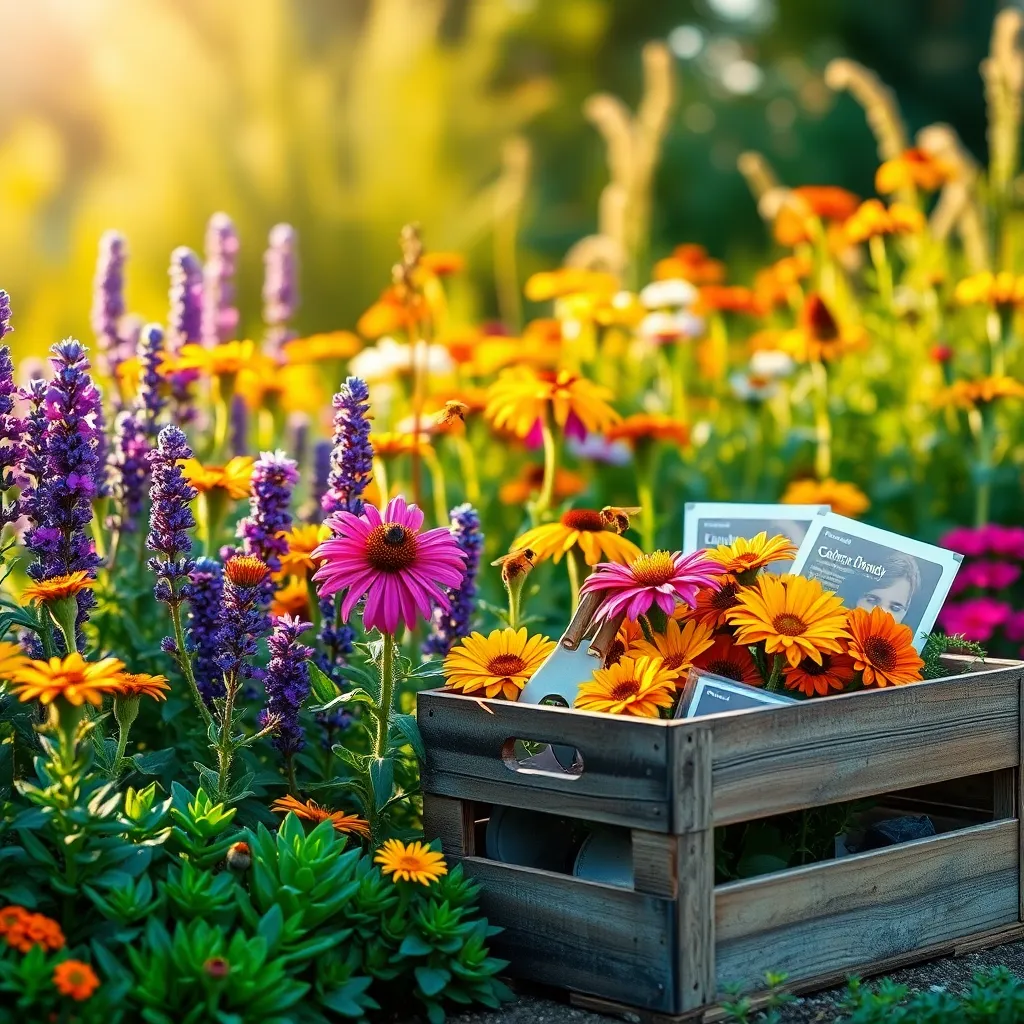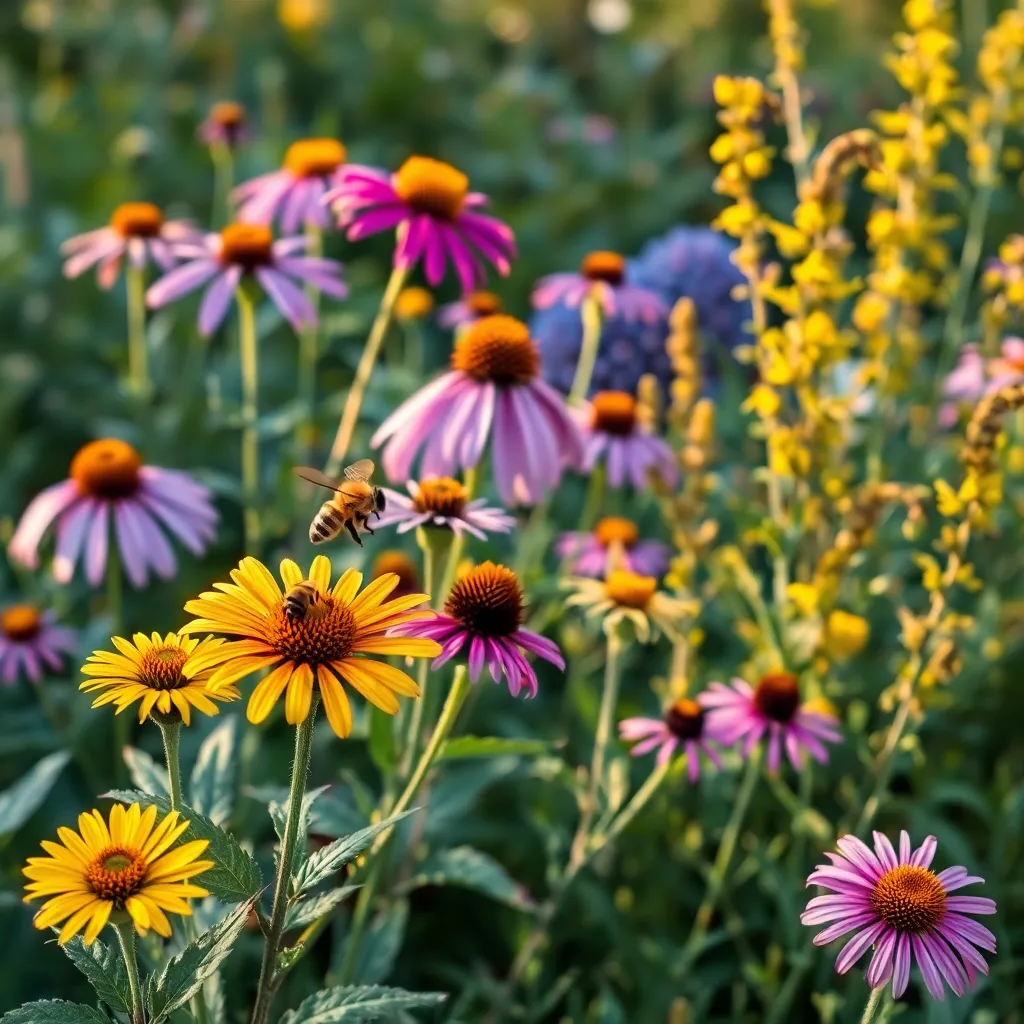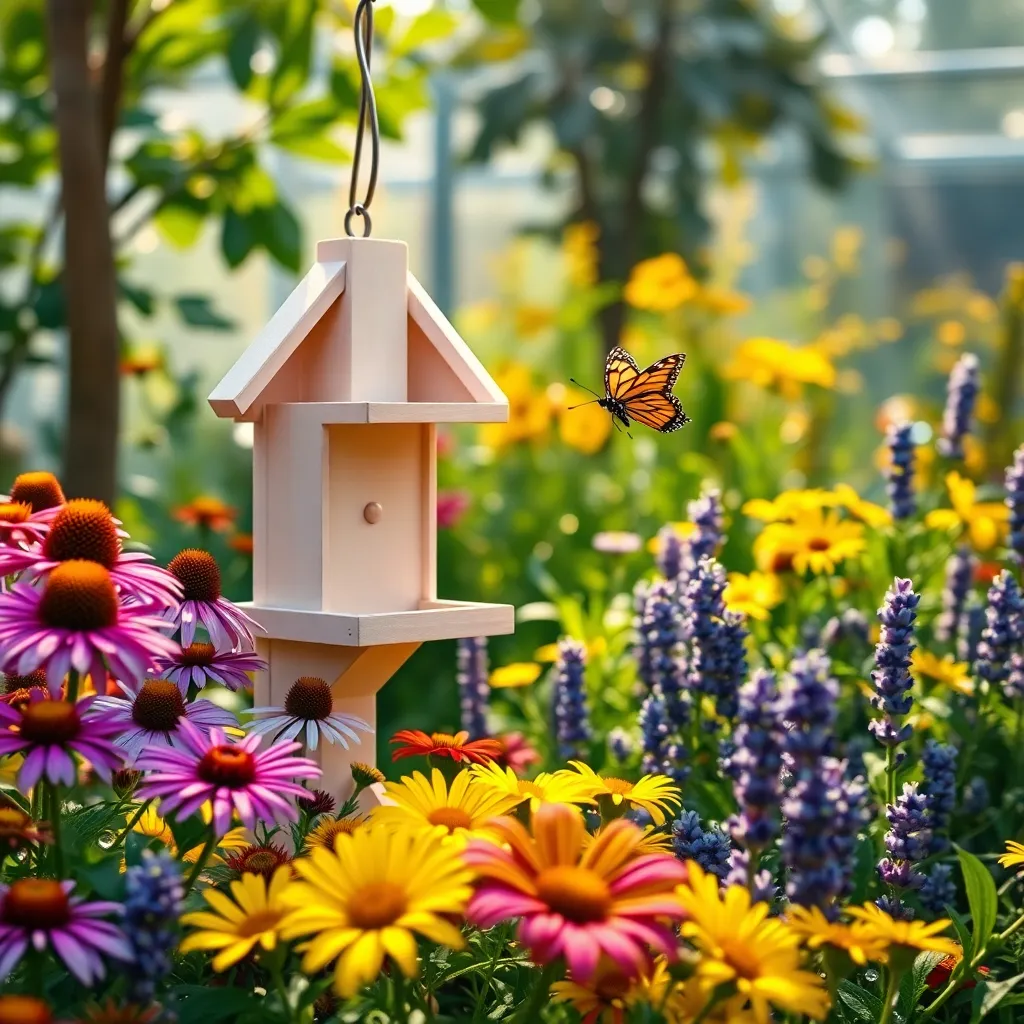Imagine stepping into your garden and being greeted by the gentle buzzing of bees and the vibrant flutter of butterfly wings—a scene that feels like a living, breathing work of art. Whether you’re nurturing your very first plant or you’re a seasoned green thumb, attracting these vital pollinators is not only a joy to witness but also a crucial step towards a thriving ecosystem.
Bees and butterflies play a pivotal role in the health of our gardens, acting as essential pollinators that help plants produce fruits and seeds. In this article, you’ll discover practical strategies and plant choices that will transform your garden into a haven for these remarkable creatures, enhancing biodiversity while adding a touch of magic to your outdoor space.
For beginners, we’ll break down the basics of creating an inviting environment, from selecting the right flowers to understanding the factors that influence pollinator visits. Experienced gardeners will gain insights into advanced techniques, such as designing habitat-friendly layouts and using organic practices to support pollinator health. Prepare to embark on a journey that not only beautifies your garden but also contributes to the well-being of our planet.
Select Bee-Friendly Flowers

To attract bees, consider planting a variety of native flowering plants that thrive in your region. Native plants often require less maintenance and adapt better to local soil and climate conditions, making them a practical choice for any gardener.
Incorporate a mix of perennials and annuals to provide continuous blooms throughout the growing season. Perennials like lavender and echinacea offer reliable blooms year after year, while annuals such as cosmos can fill in gaps with vibrant colors.
Bees are particularly attracted to blue, purple, and yellow flowers, so including plants like salvia, sunflowers, and zinnias can be highly effective. Ensure you plant in clumps rather than single plants, as this makes it easier for bees to locate your garden.
For more advanced gardeners, consider the flowering times and nectar availability of your plants. Staggering bloom times ensures that your garden provides a consistent food source from spring through fall, which is crucial for supporting healthy bee populations.
Incorporate Native Plants

Incorporating native plants into your garden is a fantastic way to attract both bees and butterflies. These plants have evolved in harmony with local pollinators, making them a natural choice for supporting your area’s ecosystem.
To choose the right native plants, start by researching which species are indigenous to your region. Local extension services or native plant societies can provide valuable information on appropriate species for your garden.
When planting natives, pay attention to their specific growing conditions such as sunlight and soil preferences. Most native plants are well-adapted to local conditions, which often means they require less water and maintenance once established.
For beginners, consider starting with a few easy-to-grow options like coneflowers or milkweed, both of which are excellent for attracting pollinators. Advanced gardeners might experiment with creating a layered planting scheme, incorporating trees, shrubs, and groundcovers for year-round interest.
Create a Water Source

Creating a dedicated water source is a fantastic way to make your garden more inviting to both bees and butterflies. These pollinators need access to clean, shallow water for drinking and cooling down during hot days.
Consider placing a shallow birdbath or a saucer filled with fresh water in your garden. Add a few rocks or pebbles to the water to provide resting spots for the insects while they drink.
Changing the water regularly is crucial to prevent the build-up of algae and to avoid attracting mosquitoes. Ensure the water is always clean and fresh, as stale water can deter bees and butterflies from visiting.
For an advanced approach, you might install a small drip irrigation system that keeps the water moving slightly, which discourages breeding insects and keeps the water fresh. Such a setup can also provide a gentle, continuous water source that is particularly appealing to bees.
Avoid Pesticide Usage

Encouraging bees and butterflies in your garden can be greatly enhanced by choosing to avoid pesticide usage. Pesticides can harm these beneficial insects, disrupting their life cycles and reducing their populations. Instead of chemical solutions, focus on natural alternatives to manage pests in your garden. You can use methods such as introducing beneficial insects like ladybugs and lacewings that prey on harmful pests.
Opting for a balanced ecosystem is key to maintaining a healthy garden without pesticides. Companion planting is an effective strategy, where certain plants are grown together to naturally repel pests. For example, planting marigolds near vegetables can deter nematodes and aphids. This approach not only protects your plants but also creates a supportive environment for pollinators.
Consider enhancing soil health as a fundamental step to reduce pest problems. Healthy soil supports robust plant growth, making plants less susceptible to pest infestations. Regularly add organic matter, such as compost or well-rotted manure, to improve soil structure and fertility. Additionally, a soil rich in nutrients encourages strong root systems, which can naturally ward off some pests.
Monitoring your garden regularly is essential for early pest detection and control. Engage in routine inspections of your plants for signs of pest activity or damage. If problems arise, you can employ simple non-toxic solutions like insecticidal soap or neem oil, which are safer for bees and butterflies. These methods are effective in treating specific pest issues without compromising the health of beneficial insects.
Install Butterfly Feeders

Installing butterfly feeders in your garden is an excellent way to attract these beautiful pollinators while enhancing your outdoor space. Butterfly feeders provide a reliable food source and can be a fun DIY project for gardeners of all skill levels.
To create a simple butterfly feeder, you can use a shallow dish or a sponge soaked in a sugar-water solution. Mix one part sugar with four parts water, and make sure to boil the mixture first to dissolve the sugar completely and prevent fermentation.
Place your feeder in a sunny, sheltered spot where butterflies can easily find it. Butterflies are most active on warm, sunny days, so positioning your feeder in such conditions will increase its attractiveness.
For added appeal, consider surrounding your feeder with butterfly-friendly plants like milkweed, butterfly bush, or lantana. These plants not only attract butterflies with their nectar but also provide essential habitat and breeding sites.
To maintain the feeder, refresh the sugar-water solution every few days, especially in hot weather, to prevent mold and fermentation. Regular cleaning with mild soap and water will keep the feeder hygienic and inviting for your winged visitors.
Conclusion: Growing Success with These Plants
In the journey of building a thriving garden that beckons bees and butterflies, we explored five essential relationship concepts: understanding the needs of your garden’s guests, creating an inviting environment, fostering natural connections, practicing patience, and nurturing growth. Each principle mirrors the care and attention required in our personal relationships. Now, as you stand on the brink of transforming your garden into a vibrant haven, consider taking the first step by planting a single pollinator-friendly flower today. This simple action sets the stage for a flourishing ecosystem of connection and beauty.
As you embark on this rewarding endeavor, remember to bookmark this article as a trusted guide through your gardening journey. Let it serve as a reminder of the parallels between nurturing plants and cultivating meaningful relationships.
Looking ahead, envision the success of your garden as a reflection of your dedication to relationships, both with nature and those around you. With each bloom and buzz, may you find inspiration to cultivate love and connection in every facet of life. Empowered by this knowledge, you’re ready to create a garden—and relationships—that truly blossom.

